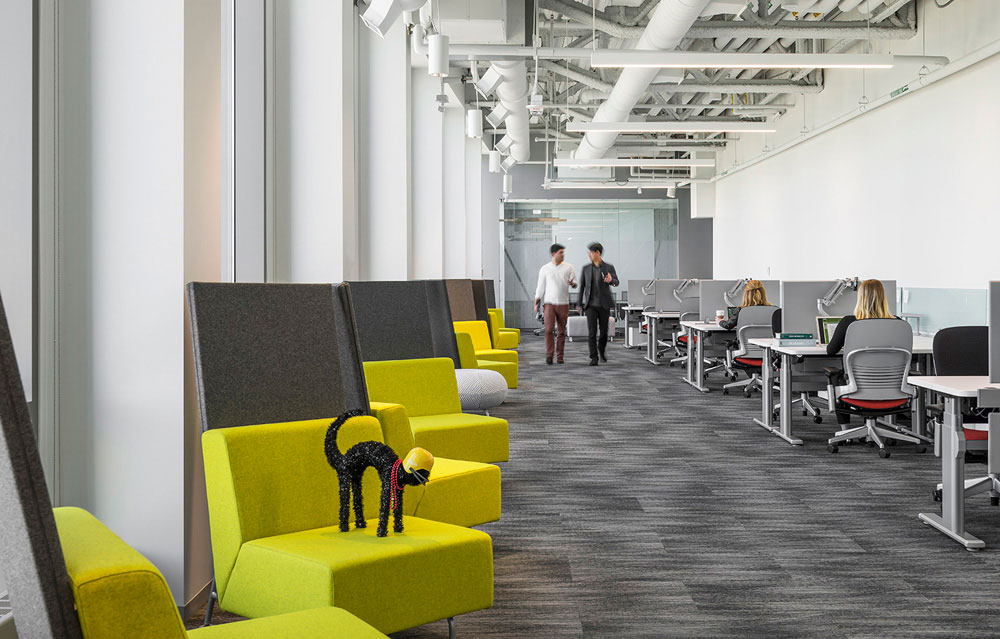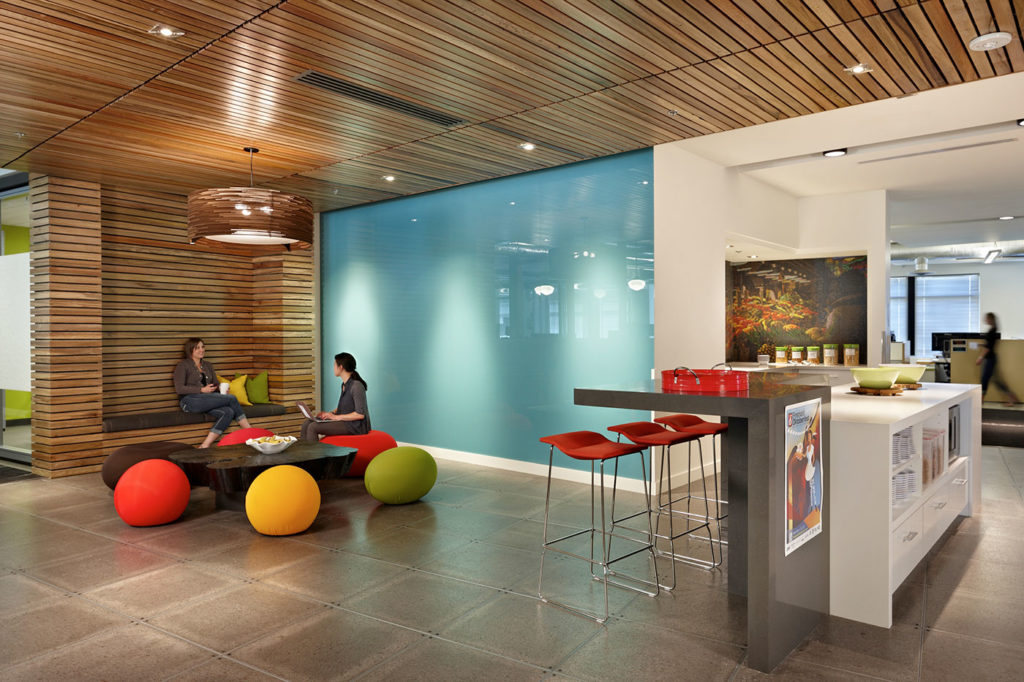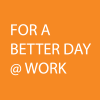A workplace’s atmosphere and surroundings can inspire employees to be more efficient and passionate in their work. If your office is barebones, offering only desks and computers, you may not be getting the most out of your employees.
According to a recent survey by Dale Office Interiors, nearly half of respondents said having a variety of spaces to both work and de-stress in would be the best step toward improving their productivity.

“Creating different workspace environments within one office adds great flexibility,” said Warren Bricknell, managing director at Dale Office Interiors. “Having quiet areas, collaboration areas and sometimes even game areas can really help employees to perform at their best. It’s about having choice to work in a way that best suits the task on hand.”
Here are four ways to create a workplace for your employees that’s designed for productivity and efficiency.
Delegate a space for relaxation
One in 5 office workers agree that having a space to relax at work increases productivity, found the Dale Office Interiors survey.
“Today people really want space to relax at work,” said Bricknell. “These spaces can come in all shapes and sizes but allow employees to feel more comfortable, express themselves and collaborate better with their peers at work.”
Providing a place to escape office stressors is crucial to get the most from your employees. According to the survey, these spaces can serve many purposes, like lunch spots or informal meeting rooms. They can also be used to relieve eyestrain from staring at a screen or neck and back tension from sitting in one place.
Offer quiet spaces for private work
Just as employees need a place to relax, they also need somewhere secluded to get work done. Over 17 percent of respondents said that quiet spaces would improve their productivity, which is often killed by distractions.
“Everyone seems to be struggling with [workplace privacy],” Meg O’Neil, design manager of applications marketing at office furniture retailer Steelcase, told Business News Daily. “It’s affecting engagement, performance and [job] satisfaction.”
According to Dale Office Interior’s survey, workers are interrupted every 11 minutes on average, and it can take 23 minutes to regain concentration.

Some employees handle disruptions better than others, but being in the middle of a hectic office can hinder performance and make employees feel more stressed. If a worker needs to focus on an assignment or even just take a personal call, they should have somewhere to go to do so.
“In any office, having a variety of workspaces that are suited to different work styles and tasks is the key to ensuring that every employee can do his or her best work,” O’Neil said.
Since individually owned workspaces are getting smaller with fewer boundaries, it’s crucial to make a series of interdependent spaces in an [office] ecosystem, O’Neil added.
Clear office clutter
Where you work should make you feel at ease, not overwhelmed. Morris Levy, co-founder of co-working space The Yard, noted that, since most people spend as much time at work as they do at home, a company’s workspace is important and should be inspiring rather than dull. Removing clutter like excessive wires and loose papers from the office would improve productivity for 13.5 percent of workers.
“Clutter in the workplace breeds distraction,” said Bricknell. “It’s extremely important to ensure that things such as wires and paper are not just left lying around the office.”
Not only does clutter affect employees, it also makes a bad impression on potential clients or future employees. Fixing this image is as easy as tidying up.
Invest in better technology
Even the simplest of advancements or changes in technology, like faster Wi-Fi or touchscreen tablets, are increasing demand for a more agile workplace. In fact, 17.6 percent of people surveyed said that better technology would improve their productivity in the workplace, likely while increasing communication and engagement across companies.
Since people can work anywhere, Levy said, it’s smart to provide a space that employees are happy coming to. You’ll want to offer the best technology your company can afford to retain talent.
“The tough thing is finding the right balance,” said Bricknell. “Each business is different, so it’s the job of the management to decide on what changes need to be made to the workspace to keep up with trend yet still meet the requirements of employees.”
AUTHOR: Sammi Caramela
(http://www.businessnewsdaily.com/7456-workspace-design- productivity.html)




